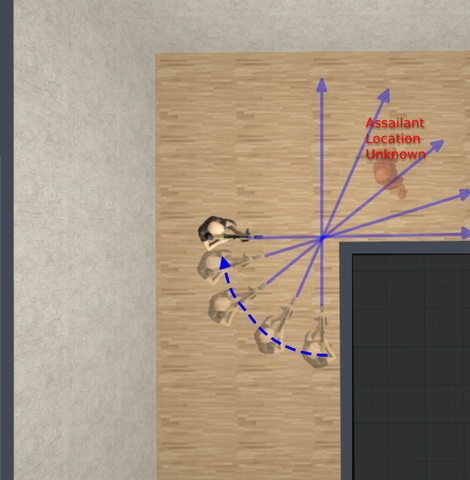In the event of a home invasion, you are your own first responder. Calm can become chaos in seconds, and even the fastest police in the world wouldn’t be able to reach you in the time it would take for you to grab your self-defense firearm and defend your home and your loved ones.
Your home is your castle, and a good castle is prepared for a siege. A well-prepared home defender should have an appropriate weapon for close quarters combat and an easy way to access it. Iron sights are impossible to see in the dark, and illuminated sights should be prioritized for nighttime home defense. Shotguns are an excellent choice for room clearing, and in a low-light environment, a red dot like the hardy Sightmark Ultrashot or the long-lasting Wolverine would be excellent for quick target acquisition. For those who prefer rifles, a low-powered variable optic (LPVO) like the Sightmark Core 2.0 1-4x24mm is perfect for both-eyes-open shooting and precise fire at short and medium ranges. Its variable illumination allows for low-light vision shooting, and its etched reticle is designed for practical combat applications.
It would also be beneficial to mount a flashlight on your weapon. INFORCE makes rugged, powerful rifle-mounted lights with high lumen and candela counts. Perfect for flooding an entire room with just one small light, these INFORCE products are built with home defense in mind.
To keep your weapons easy to access, consider storing your weapon(s) in a panel in your headboard. This will keep your firearms within reach and out of the hands of your children. While this might seem like something from a James Bond movie, American Concealed Furniture specializes in making concealed panels for your bed or cupboard. These make your weapons faster to access than a gun safe while ensuring they remain secure from children.
Should You Clear Rooms in a Home Defense Scenario?
Your priority in the event of a home invasion is to protect your life and the lives of your family members. If everyone you care about is in the same room as you, there is absolutely no need to exit the room to clear the rest of your house. If your room has a single entry point, it acts as a bunker. Your home insurance should cover stolen property—but it can’t bring you back to life.
If everyone is accounted for, access your weapon and aim it at the door. Call the police and let them know there is a suspected burglary at your residence. It’s important to tell them you are armed. When they arrive and announce themselves, stow your weapon to avoid being mistaken for the suspect.
Don’t stand directly in front of the door. It puts you in the direct line of fire. Instead, huddle in the corner of your room behind cover if you have it.

When Room Clearing Is Necessary
Most people assume they should hunt for intruders—but room clearing for home defense is only justified if another person (a child, parent, or partner) is in another part of the house. Your sole duty would be to reach them and defend that room. The goal of home defense is not to seek and destroy. Home invaders rarely act alone, and you don’t know how many there are or what they’re armed with.
If you must move through your home, do it with stealth and caution. Wear footwear—broken glass or debris could cause injury. Flip-flops or bathroom slippers are quiet options that offer basic protection.
Combat Stress and Equipment Considerations
In a real-life firefight, stress and adrenaline will impact your performance. Grogginess from being roused in the night will only make things worse. You might forget to disengage the safety, reload, or even pull the trigger. Your fine motor skills may vanish. That’s why optics like the LPVO Sightmark Core 2.0 1-4x24mm are helpful—they’re optimized for both-eyes-open shooting and rapid target engagement under duress.
How to Clear Rooms Safely
When moving through hallways or entering rooms, corners are your greatest threat. Use a method called “slicing the pie”—move in a quarter-circle around corners, keeping your barrel hidden behind cover until the area is cleared.

Stay close to the wall without touching it, and treat each corner like a new slice. Step onto the next “slice” only after confirming the current one is clear. When encountering a person, be absolutely certain of your target before firing—it may be your loved one, not an intruder.
Clearing Doorways and Staircases
Doors present another challenge. Don’t stand in the middle of the doorway. Instead, stay behind the doorframe for cover. Turn the handle, swing the door open fully, and slice the pie through the opening. Once the room is cleared visually, step back before entering. Then move left or right into a corner—not straight in—and use the wall to guide your movement.

The same rules apply to stairs: hug the wall, weapon pointed upward, ascend slowly and silently. Getting caught in the open on stairs is a tactical nightmare.
Practice Makes Prepared
If you want to take this self-defense skill seriously, rehearse at home. Know the blind spots in your house, consider entry points, and map out your movements. You don’t even need to hold your weapon—walk your home and visualize threats as part of daily routine.
Above all, remember: your job isn’t to take out the bad guys. Your job is to keep yourself and your loved ones alive. That’s what home defense is all about.



